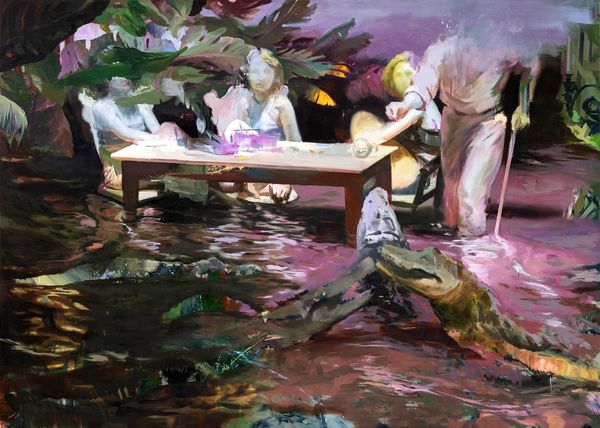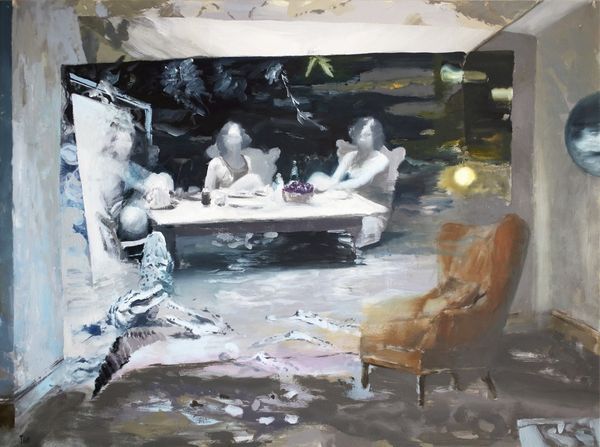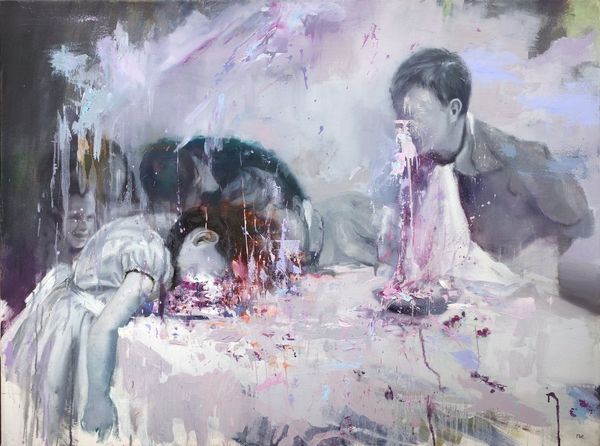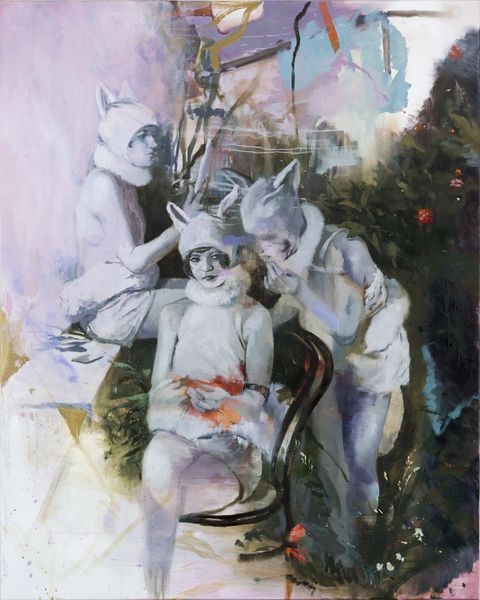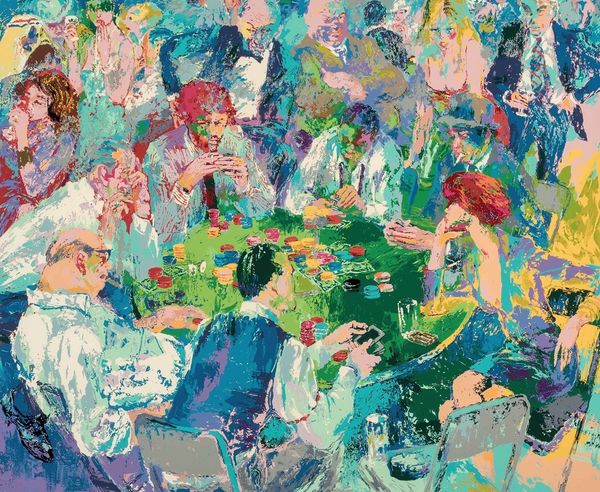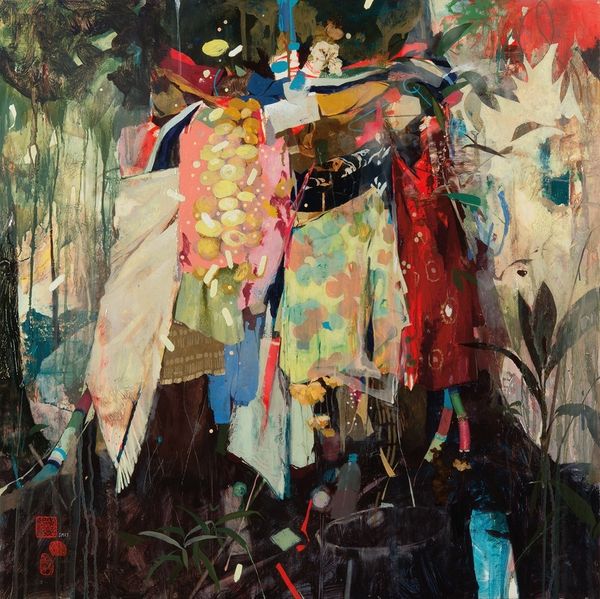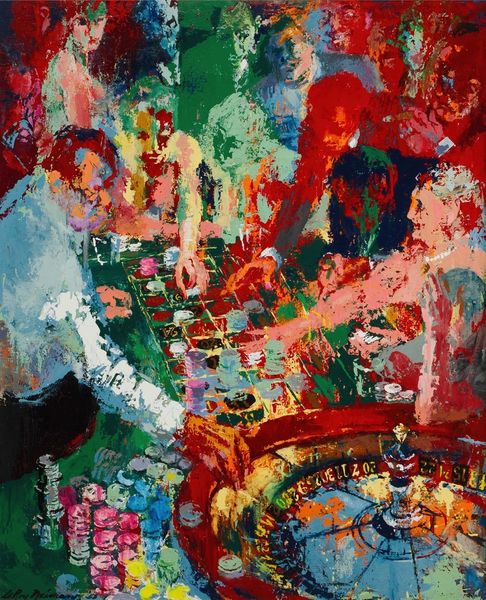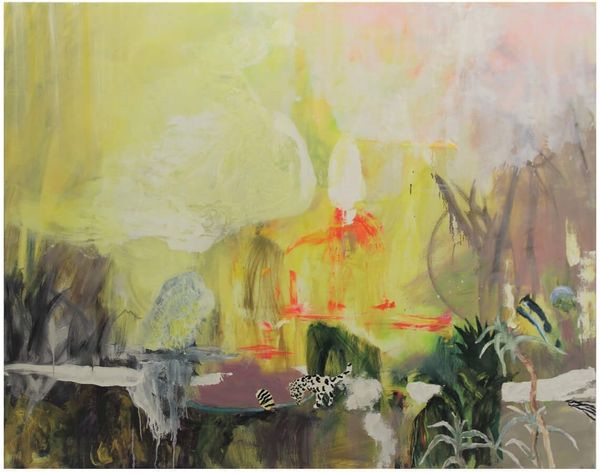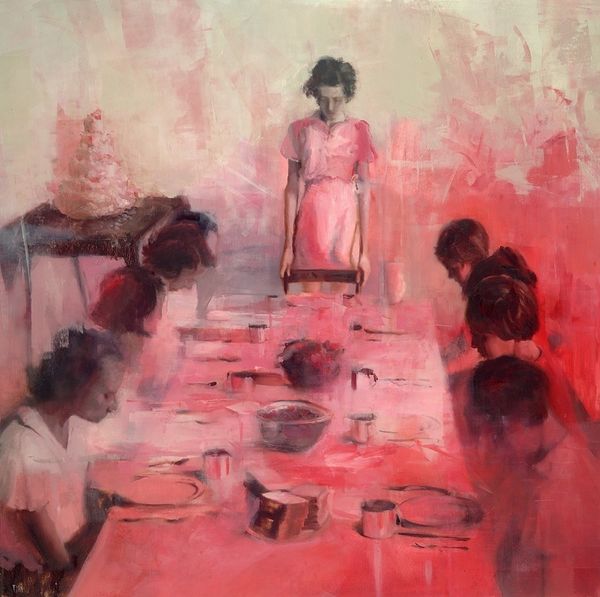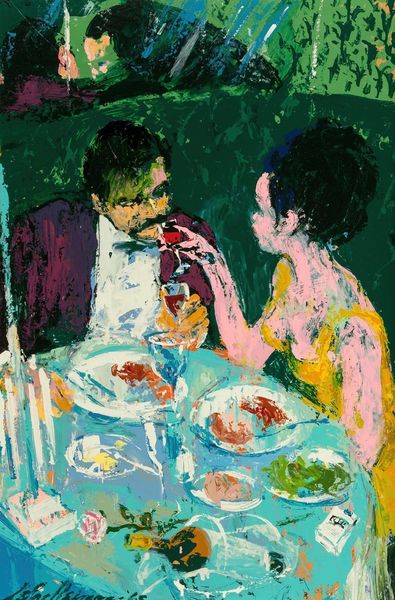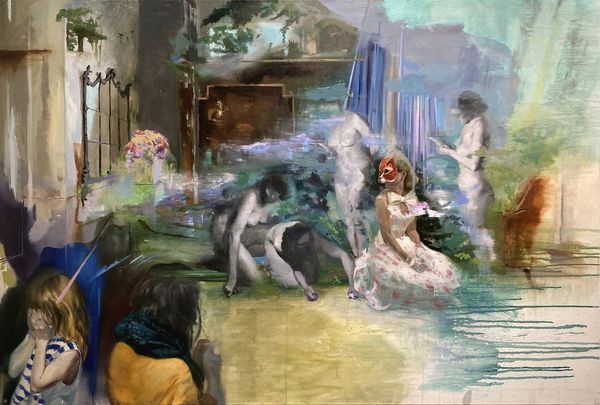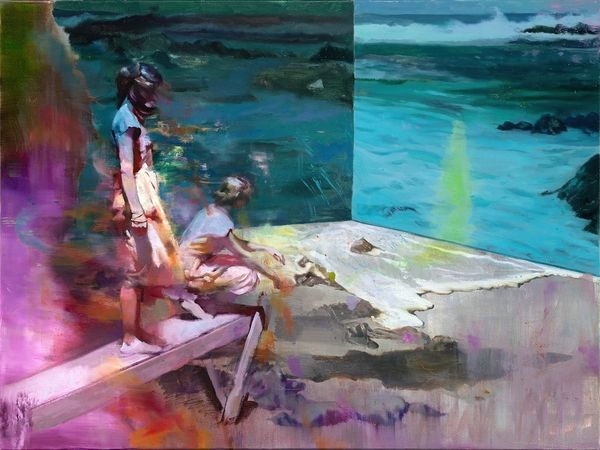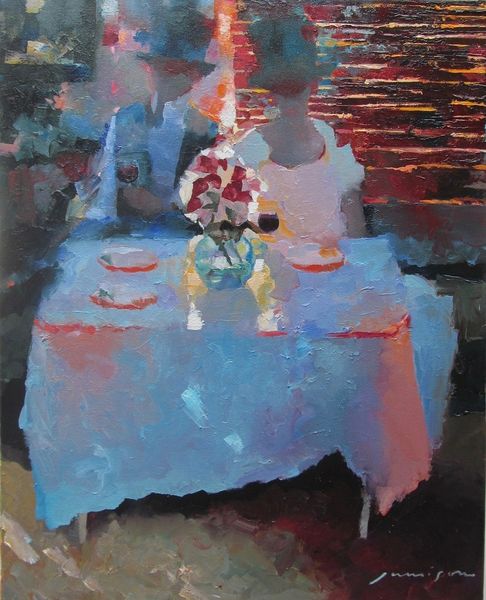
plein-air, acrylic-paint, impasto
#
contemporary
#
plein-air
#
landscape
#
acrylic-paint
#
figuration
#
impasto
#
acrylic on canvas
#
group-portraits
#
genre-painting
#
modernism
#
realism
Copyright: Modern Artists: Artvee
Curator: Well, here we have Joshua Flint's "Fallen Branches," painted in 2020 using acrylics, with evident impasto application, to create quite a textural surface. Editor: It's striking. My first impression is one of mystery; a secluded gathering bathed in ethereal light, like a scene caught between dream and reality. The brushstrokes really emphasize that sense of transience. Curator: Yes, the visible brushwork throughout the acrylic on canvas is interesting here because, as you suggest, it blurs the figures slightly, adding to this strange ambience of something that could have easily been "found," perhaps at a rural commune or artist colony, and thus captured 'en plein air'.. The subject matter is not 'history painting,' but in a sense "genre painting," or even approaches a "group portrait." How would you approach that aspect, then, formally? Editor: The composition is fascinating. The contrast between the dark, almost impenetrable foliage surrounding the bright, sharply defined table creates a compelling push and pull. Notice how the waterfall acts like a pictorial backbone to the image, bisecting the top-right with almost an ethereal, spiritual glow, like a visual 'yin' to the jungle 'yang.' Also, the almost monochrome pallette in greens, whites, and muted purples is remarkably effective at conveying this mood, I feel. Curator: I wonder about the social aspect: the setting—almost overtaken by nature. A sort of casual, bohemian affair, you know? There is certainly a contrast implied between raw nature on the periphery and human order in the scene’s center, perhaps? That reading opens into ideas surrounding "realism," even if that realism is of an abstract variety here, bordering on "modernism". How might we square that? Editor: Agreed. Considering its place in Modernism, the distortion or abstraction of figures isn't random; it's a conscious choice to disrupt traditional representation. The texture itself could be viewed as an aesthetic end, and in some schools of thought this can and should take precedence over representational accuracy, thus elevating painting as a material process as well as a mimetic exercise. Curator: Thank you, indeed. Looking closer has expanded the artwork into the material and social spheres; understanding these considerations sheds so much light on what Joshua Flint attempted in his practice. Editor: Yes, that push and pull—both visually and thematically—leave me wanting to linger a while longer, mulling it all over!
Comments
No comments
Be the first to comment and join the conversation on the ultimate creative platform.
